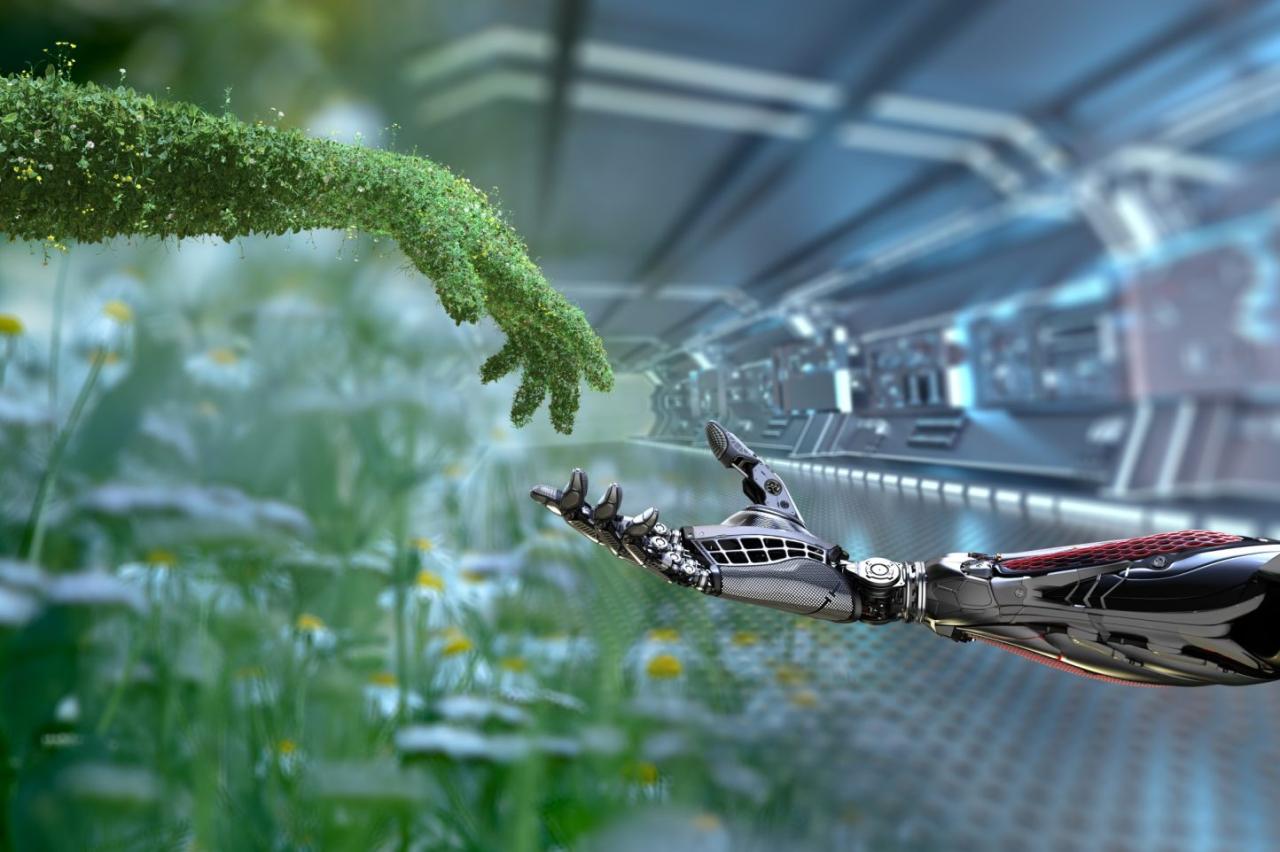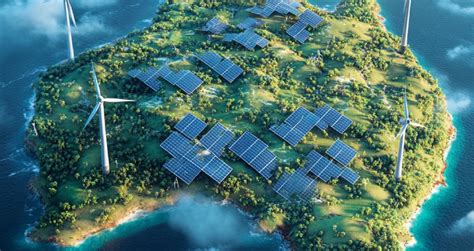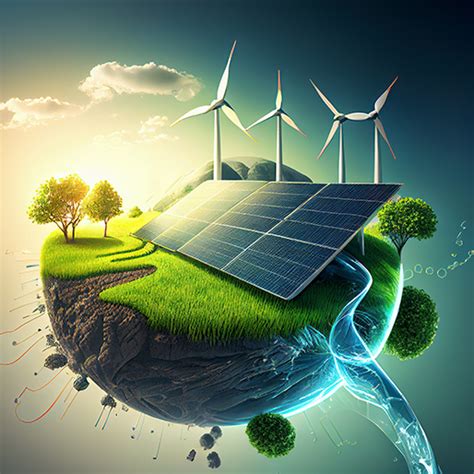In the grand narrative of human progress, certain revolutions unfold not with loud declarations but with the quiet, persistent hum of innovation. Today, we are living through one such transformation: the Green Technology Revolution. Far from being a niche segment for environmental enthusiasts, Green Tech—or cleantech—has become a formidable economic and industrial force, fundamentally reshaping how we power our cities, manufacture our goods, grow our food, and build our future. This seismic shift is driven by a dual imperative: the urgent need to address climate change and the incredible economic opportunity that lies in sustainable innovation. It’s a transition from a linear, extractive model of “take, make, dispose” to a circular, regenerative one that promises not only planetary health but also long-term prosperity and resilience.
This article delves deep into the heart of this revolution, exploring the core principles that guide it and its transformative impact across the globe’s most vital industries. We will examine the specific technologies being deployed, the economic and social ramifications of this shift, and the challenges that lie on the path to a truly sustainable global economy. This is the story of how human ingenuity is being harnessed to align our industrial might with the natural systems that sustain us.
The Impetus Behind the Green Wave: Drivers and Principles
The rapid acceleration of Green Tech adoption is not a random occurrence. It is the result of a confluence of powerful forces pushing and pulling our economies toward sustainability. On one hand, the stark realities of climate change, resource depletion, and environmental degradation create a powerful “push.” Governments are responding with increasingly stringent regulations, carbon pricing mechanisms, and international agreements like the Paris Accord. On the other hand, a significant “pull” comes from market forces. Consumers, particularly younger generations, are demanding sustainable products and corporate responsibility. Simultaneously, investors are recognizing that long-term risk is intrinsically linked to environmental factors, fueling the meteoric rise of ESG (Environmental, Social, and Governance) investing.
At its core, this revolution is guided by a set of interconnected principles that define its objectives:
A. Sustainability at the Core: This principle moves beyond simply reducing harm. It focuses on creating systems that can endure indefinitely without depleting natural resources or overloading the planet’s ecosystems. It’s about meeting the needs of the present without compromising the ability of future generations to meet their own needs.
B. The Circular Economy Model: In direct opposition to the traditional linear economy, the circular model is restorative and regenerative by design. It aims to eliminate waste and keep materials in use for as long as possible through designing for durability, reuse, remanufacturing, and recycling. Products are seen not as disposable but as reservoirs of valuable resources.
C. Efficiency and Optimization: A cornerstone of Green Tech is the relentless pursuit of doing more with less. This applies to energy, water, raw materials, and even space. Through smart technology, data analytics, and innovative design, industries can drastically reduce their input requirements, which cuts costs and lessens environmental impact simultaneously.
Green Tech in Action: A Sector-by-Sector Transformation

The true power of the Green Tech revolution is most visible when examining its application within specific industries. It is not a one-size-fits-all solution but a diverse toolkit of innovations tailored to the unique challenges of each sector.
A. The Energy Sector: Powering the Future The energy sector is arguably the vanguard of the green transition. For over a century, our world ran on fossil fuels, a dependency that powered industrial growth at a tremendous environmental cost. Green Tech is systematically dismantling this old paradigm.
- Solar and Wind Dominance: Photovoltaic (PV) solar panels and wind turbines have transitioned from expensive alternatives to the cheapest forms of new electricity generation in many parts of the world. Innovations in turbine size, panel efficiency, and manufacturing scale have driven costs down exponentially. Vast solar farms in deserts and massive offshore wind installations are becoming central pillars of national energy grids.
- Energy Storage Solutions: The primary critique of renewables—their intermittency—is being solved by advanced energy storage. Lithium-ion batteries, once confined to consumer electronics, are now being deployed at grid scale to store excess solar and wind power for use when the sun isn’t shining or the wind isn’t blowing. Other technologies like pumped-hydro storage, green hydrogen production, and thermal storage are expanding the toolkit.
- Smart Grids and Decentralization: Green Tech is not just changing how we generate power, but also how we manage and distribute it. Smart grids use digital communication technology to detect and react to local changes in energy usage. This enables a two-way conversation between the utility and its customers, optimizing power flow, reducing waste, and seamlessly integrating decentralized energy sources like rooftop solar panels. This creates a more resilient, efficient, and user-responsive energy system.
B. Manufacturing and Industry: Forging the Circular Economy The manufacturing sector, historically a major source of pollution and waste, is undergoing a profound reinvention through the principles of the circular economy and Industry 4.0.
- Sustainable Materials: There is a growing shift away from virgin, resource-intensive materials. Companies are innovating with bio-plastics derived from corn or sugarcane, cross-laminated timber that can replace concrete and steel in construction, and textiles made from recycled ocean plastics. The use of recycled steel, aluminum, and glass is becoming standard practice, conserving massive amounts of energy and natural resources.
- Additive Manufacturing (3D Printing): Unlike traditional subtractive manufacturing which carves objects out of a larger block of material (creating significant waste), 3D printing builds objects layer by layer. This process uses only the material needed, drastically reducing waste, enabling complex and lightweight designs, and allowing for on-demand, localized production that cuts down on transportation emissions.
- Industrial IoT and AI: Smart factories are deploying networks of sensors (the Internet of Things, or IoT) to monitor every aspect of the production process in real-time. Artificial intelligence analyzes this data to predict maintenance needs, optimize energy consumption, and minimize defects, all of which contribute to a leaner, more efficient, and less wasteful operation.
C. Transportation and Logistics: The Movement of Tomorrow The transport sector is a major contributor to global greenhouse gas emissions. Green Tech is tackling this challenge head-on, promising a future of cleaner, quieter, and more efficient mobility.
- The Electric Vehicle (EV) Era: The rise of the electric vehicle is the most visible sign of this transformation. Driven by plummeting battery costs and advancements in performance, EVs are moving from the luxury market into the mainstream. This extends beyond passenger cars to include electric buses, trucks, and delivery vans, which are critical for decarbonizing urban logistics.
- Hydrogen and Sustainable Fuels: For heavy-duty transport like long-haul trucking, shipping, and aviation, where batteries are less practical, green hydrogen is emerging as a key solution. Produced using renewable electricity to split water, green hydrogen is a zero-emission fuel. In parallel, the aviation industry is investing heavily in Sustainable Aviation Fuels (SAFs), which are produced from sources like biofuels and synthetic fuels and can be used in existing jet engines.
- Smart Mobility and Logistics: Urban traffic congestion is a major source of wasted fuel and emissions. Smart traffic management systems use AI and real-time data to optimize traffic light timing and route vehicles more efficiently. In logistics, AI-powered platforms are optimizing delivery routes, consolidating shipments, and predicting demand to create a supply chain that is not only faster but also significantly greener.
D. Construction and Real Estate: Building a Greener World The built environment accounts for nearly 40% of global energy-related carbon emissions. Green building practices are turning our homes, offices, and cities into active parts of the climate solution.
- Green Building Materials: Construction is moving towards materials that are sustainable, recycled, and locally sourced. This includes using bamboo (a rapidly renewable grass with the tensile strength of steel), recycled steel, reclaimed wood, and innovative “self-healing” concrete that reduces the need for repairs and replacement.
- Energy-Efficient Design: Modern green buildings are designed to minimize energy consumption from the outset. This involves passive design strategies like orienting a building to maximize natural light and airflow, using high-performance insulation, installing energy-efficient windows, and incorporating green roofs that provide insulation and manage stormwater.
- Smart Building Technology: Today’s buildings are becoming intelligent ecosystems. Integrated systems control lighting, heating, and cooling based on occupancy and time of day, drastically cutting energy waste. Water recycling systems capture and reuse greywater, while on-site renewable energy generation, like solar panels, can turn a building into a net-zero energy consumer, or even a net producer.
E. Agriculture: Cultivating a Sustainable Harvest Agri-tech is revolutionizing one of humanity’s oldest industries, aiming to feed a growing global population while reducing its significant environmental footprint.
- Precision Agriculture: This data-driven approach uses technologies like GPS, drones, and soil sensors to allow farmers to manage their crops with surgical precision. They can apply water, fertilizer, and pesticides only where they are needed and in the exact amounts required. This conserves resources, prevents chemical runoff into waterways, and improves crop yields.
- Controlled Environment Agriculture (CEA): Vertical farming and hydroponics bring food production into controlled indoor environments. By growing crops in vertically stacked layers, often in urban centers, these methods use up to 95% less water than traditional farming, eliminate the need for pesticides, and drastically reduce transportation distances from farm to table.
- Sustainable Water Management: Water scarcity is a critical global challenge. Green Tech offers solutions like drip irrigation, which delivers water directly to the roots of plants, and advanced soil moisture sensors that prevent overwatering. Water recycling and desalination plants powered by renewable energy are also becoming more viable for agricultural use in arid regions.
Beyond the Balance Sheet: Economic and Social Transformation

The impact of the Green Tech revolution extends far beyond environmental metrics. It is catalyzing significant economic and social shifts. The transition is creating entirely new industries and job categories, from wind turbine technicians and solar panel installers to ESG analysts and circular economy designers. These “green-collar jobs” represent a major area of employment growth for the 21st century.
Economically, while some green technologies require significant upfront investment, they often result in lower operational costs over their lifespan, providing a strong return on investment. Businesses that embrace sustainability are often more resilient, innovative, and attractive to both top talent and investors.
Socially, the benefits are profound. A shift away from fossil fuels leads to cleaner air, reducing rates of respiratory illness and improving public health, particularly in urban areas. Green Tech can also promote environmental justice by ensuring that the benefits of a cleaner environment—and the economic opportunities of the green transition—are shared equitably across all communities.
Navigating the Hurdles on the Path to a Greener Future
Despite the immense promise and progress, the road to a fully green economy is not without its obstacles. Acknowledging and addressing these challenges is crucial for maintaining momentum.
A. Substantial Initial Capital Outlay: Transitioning legacy infrastructure, whether it’s an energy grid or a manufacturing plant, requires enormous upfront investment. While the long-term savings are clear, securing this initial capital can be a significant barrier for many businesses and developing nations.
B. Scalability and Infrastructure Deficits: Many green technologies need supporting infrastructure to be effective. Electric vehicles require a robust and widespread charging network. A renewable-powered grid needs massive investment in transmission lines and energy storage. Scaling these systems to meet global demand is a monumental engineering and financial task.
C. Policy and Regulatory Inconsistencies: A lack of clear, consistent, and long-term government policy can create uncertainty and deter private investment. Stable carbon pricing, streamlined permitting for renewable projects, and international cooperation on standards are essential to accelerate the transition.
D. Resource and Supply Chain Constraints: The production of batteries, solar panels, and wind turbines relies on specific raw materials, such as lithium, cobalt, and rare earth elements. Ensuring a sustainable, ethical, and geopolitically stable supply chain for these critical minerals is a major challenge that requires careful management and investment in recycling technologies.
The Inevitable Green Horizon
The Green Technology revolution is more than a trend; it is the next stage of our industrial and economic evolution. It represents a fundamental realignment of our goals, where profitability and planetary health are no longer seen as conflicting objectives but as deeply intertwined prerequisites for long-term success. The transformation is well underway, with innovations once considered futuristic now becoming practical, scalable, and economically advantageous.
While significant challenges in finance, policy, and infrastructure remain, the direction of travel is clear. The combined forces of technological innovation, market demand, and regulatory necessity have created an unstoppable momentum. The industries that thrive in the coming decades will be those that embrace this change, integrating sustainability into the very core of their operations. The Green Tech revolution is our most promising pathway to a future that is not only cleaner and more equitable but also more resilient, innovative, and prosperous for all.













